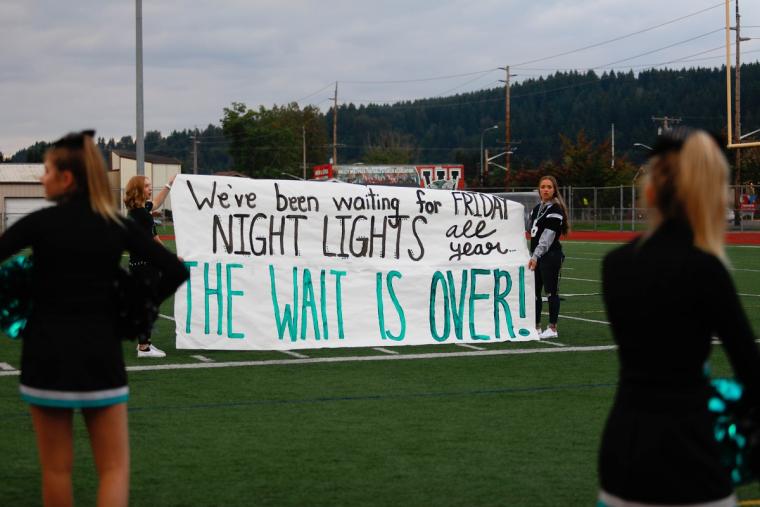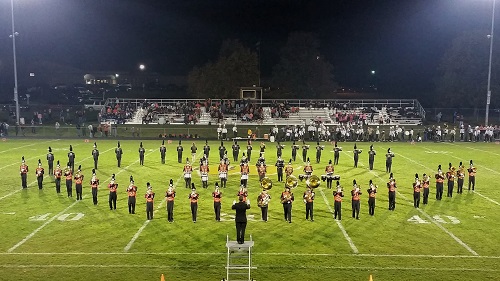
Another school year is beginning, and high school students are returning to the halls – and the fields, and the gyms… or are they?
According to youth sports officials, teens’ participation in elite programs, travel ball and all-star teams is robbing high schools of athletes, and robbing students of some great memories. And as more parents seek out ways for their children to catch the eye of college coaches (or even pro scouts), participation in high school sports participation is increasingly left on the sidelines.
“AAU has long supplanted traditional high school hoops programs as the premier destination for collegiate recruiting,” notes an article in Complex. “Moreover, for teenagers looking to play basketball at the next level, participation in AAU programs has become absolutely necessary, as it provides the greatest visibility to be discovered by potential colleges and universities.”
“AAU is killing high school basketball,” Marcus Stout told reporters at Complex. Stout, a former standout at Fordham University who briefly played overseas now teaches basketball fundamentals to youth. “It’s a necessary evil though. It’s good because it provides opportunities to players who might otherwise be overlooked, but it’s de-emphasizing the essence of the sport of basketball.”
Many high schools are updating their venues, including fields, gyms and tracks. The goal is to entice students to become student athletes – and to keep them in those programs, which have been shown to have a benefit, far beyond simply the win/loss record.
In his comments to the National Federation of State High School Associations, Shawn Hime, Executive Director of the Oklahoma State School Boards Association remarked, “The research is clear: Students who participate in extracurricular activities are more likely to succeed in the classroom than their peers who do not. They are more likely to graduate, to go to college and to achieve an undergraduate degree. Their attendance and discipline records tend to be better as well. For some, especially at-risk students, sports and fine arts are what draws them to school and motivate them to earn the grades they need to participate. For others, the success they experience in their chosen activities drives them to be the best in other facets of life, including academics. For all, these programs foster a sense of belonging and achievement.”
Unfortunately, travel sports are often seen as a more lucrative option because of issues such as NIL.
“There are two main reasons college-bound athletes have increasingly de-emphasized participation in their respective high school teams,” notes Complex. “The first, and most obvious, is the heavy influence of shoe companies. For a league once dedicated to youth development and skill-building, AAU programs have now become hunting grounds for athletic apparel and shoe companies. Nike, adidas, and now Under Armour have been pouring loads of money into AAU programs for years and they're using every tool in their arsenal to influence highly coveted recruits.”
Pro athletes (even the late, great Kobe Bryant) have gone on record to encourage high school students to stay with their teams and not to give in to the lure.
It’s an across-the-board phenomenon. Little League is suffering as more baseball players join elite programs.
“People started doing this travel ball thing, and that’s sort of led to the slow death of the rec league,” Adam Osborne, baseball coach at Clarke Central High School in Athens, Georgia, told the Atlanta Journal-Constitution.
 In her column, The NFHS Voice, executive director Karissa Niehoff did not tiptoe around the subject, entitling her editorial: “Travel Ball Parents: Better Option is School-Based Sports.”
In her column, The NFHS Voice, executive director Karissa Niehoff did not tiptoe around the subject, entitling her editorial: “Travel Ball Parents: Better Option is School-Based Sports.”
Niehoff was completely fair, noting the following:
"It is, in fact, true that an overwhelming majority of NCAA Division I athletes played club sports. According to an NCAA survey, 92 percent of women and 89 percent of men played club basketball, and 91 percent of women’s volleyball players competed on a non-school team in high school. At the other end, however, only 24 percent of football players competed on a club team.
Herein lies the difference. There are more than 540,000 boys who played high school basketball last year and fewer than 6,000 who played basketball at the NCAA Division I level where most of the scholarships are available. Stated another way, about one percent of high school boys basketball players will play at the NCAA Division I level. About 2.8 percent of the one million-plus boys in high school 11-player football will play at the Division I level.
The answer? Parents should encourage their kids to play multiple sports for their high school teams and save the money they would spend on club sports for college tuition if scholarship money does not materialize. Even in those situations where students are charged a modest fee to participate, school-based sports remain an incredible bargain when compared to club sports."
(The full editorial is available at this link.)
Additionally, thanks to the emergence of recruitment platforms like Next College Student Athlete and CaptainU, students are able to showcase their sports skills to potential coaches nationwide, without signing up for elite programs or incurring travel costs.
According to the most NFHS survey, while the number of high schools offering programs has remained unchanged, the number of youth signing up for programs has gone down. This raises concern that teenagers could be missing out. It is important, says the NFHS, to continue to promote high school sports and activities as a vital part of the growth experience:
“Students attend classes daily and experience a wide range of curricular activities; however, high school graduates frequently report that some of their most valuable learning experiences come from their activity and athletic participation… For many students, athletic and activity participation becomes the highlight of their high school career.”
And, notes Niehoff, “High school-based sports have more interest, more media coverage and more fans than club sports, and the kids have more fun because they are representing their team and their community.”

